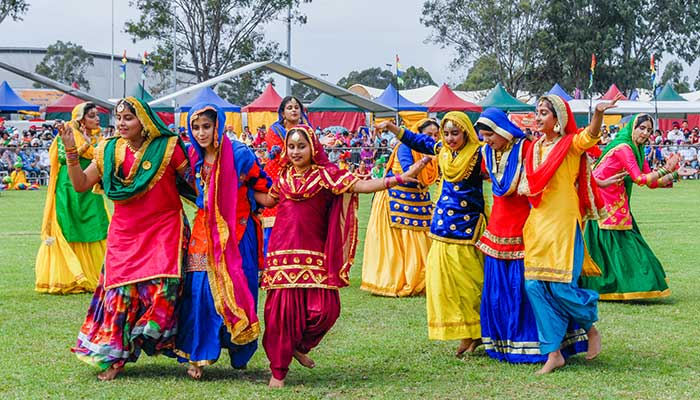Punjab: The Land of Rich Culture
Punjab, derived from the Persian words "Panj" (five) and "Aab" (water), meaning "the land of five rivers," is one of India's most culturally rich states. These rivers—Sutlej, Ravi, Chenab, Beas, and Jhelum—have historically contributed to Punjab's fertility and prosperity, establishing it as a significant region of agricultural and cultural importance.
- Upasna Malhotra
- 20 June, 2024
- 2 mins ago

Punjab: The Land of Rich Culture
Punjab, derived from the Persian words "Panj" (five) and "Aab" (water), meaning "the land of five rivers," is one of India's most culturally rich states. These rivers—Sutlej, Ravi, Chenab, Beas, and Jhelum—have historically contributed to Punjab's fertility and prosperity, establishing it as a significant region of agricultural and cultural importance.
Historical and Cultural Heritage
Punjab's heritage is deeply rooted in its history and traditions. It has been the cradle of the ancient Indus Valley Civilization, and its cultural richness is reflected in various facets of life, from its architecture and festivals to its arts and crafts. However, the state has seen significant changes over the past five decades, leading to concerns about the erosion of its traditional beauty and cultural essence.
Migration and Cultural Shifts
In recent years, there has been a noticeable migration trend from Punjab to other cities and countries, particularly to nations like Canada, the United States, and the United Kingdom. This exodus has led to a dilution of traditional Punjabi culture as people adapt to new environments and lifestyles. Additionally, there has been a shift in religious preferences and practices, contributing to changes in the cultural landscape of the state.
Governance Challenges in Punjab: A Call for Youth and Innovation
Punjab has faced significant governance issues, leading to widespread suffering and stagnation. The state's youth grapple with high intoxication rates, hampering their potential. Punjab urgently needs its youth to step forward and drive change.
Textile Heritage: Phulkari
Textiles play a crucial role in preserving Punjab's cultural identity. Phulkari, a traditional embroidery technique, is central to Punjab's textile heritage. Characterized by intricate designs and vibrant colors, Phulkari is more than just an art form; it is a symbol of Punjabi tradition and craftsmanship. Despite the encroachment of modern designs, efforts are being made to revive and sustain this age-old craft.
Music and Dance: The Soul of Punjab
Music and dance are integral to Punjabi culture, with genres like Bhangra and Giddha being globally recognized. These forms of artistic expression are not just entertainment; they are woven into the very fabric of Punjabi social and cultural life. The passion for singing and dancing is inherent in Punjabis, making them ambassadors of their culture worldwide.

Traditional Jewellery: Sheeshphul
Jewellery from Punjab, especially traditional pieces like the Sheeshphul (headbands), holds a special place in Punjabi heritage. These ornate headbands, once a symbol of pride for Punjabi women, have lost their prominence amidst contemporary jewellery trends. However, there is a growing movement to revive and popularize these traditional adornments as a means of preserving cultural identity.
Conclusion
Punjab's rich cultural heritage, defined by its history, textiles, music, dance, and jewellery, is a testament to its vibrant past. Despite the challenges posed by migration and modernization, there is a strong sense of pride and effort among Punjabis to preserve and celebrate their unique culture. Encouraging startups to root themselves in Punjab can create more opportunities, fostering economic growth and providing a brighter future for its residents. By embracing and revitalising its traditions, Punjab continues to be a beacon of cultural richness and heritage.
I, Upasna Malhotra, a budding writer, graduated in Chemistry from Hindu College. My professional background lies in Digital Media Business Development. Alongside my work in various media organisations, I am also involved in running my own venture.






